Lemon trees can show signs of overwatering if their leaves turn yellow and eventually brown. Soil that is excessively wet, growing mold or if you have smelly mulch these can be signs that the lemon tree is overwatered. Slow down your watering schedule and apply a 2 inch layer of bark mulch absorb extra water from the rain.
After around 2 weeks you can add a slow release fertilizer that contains nitrogen like pelleted chicken manure or a liquid fish emulsion. This will replace any nutrients lost from the soil due to overwatering.
You can save an overwatered lemon tree if you follow a few easy steps. This article will explore how to know your lemon tree is overwatered and what to do next to save it.
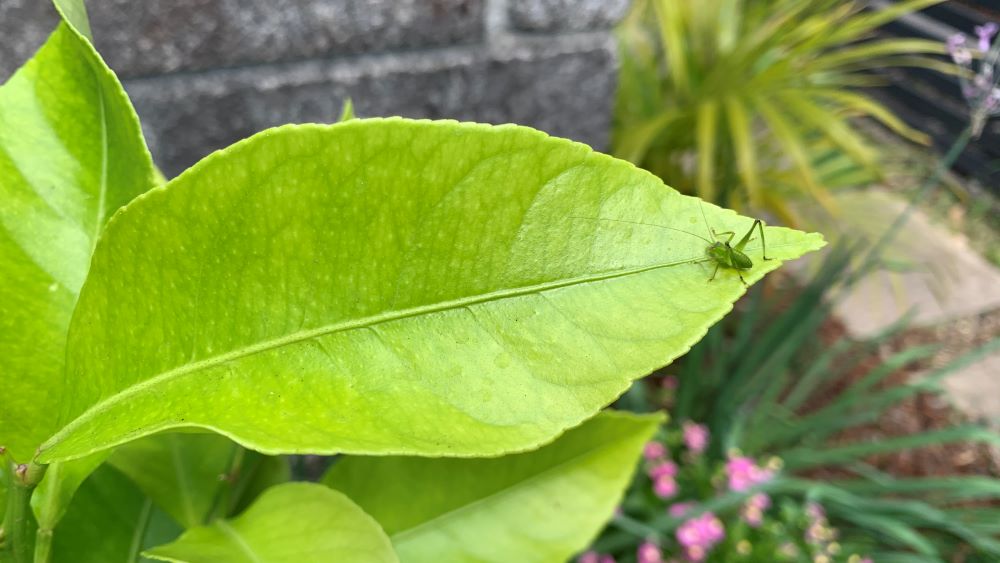
How to know your lemon tree is overwatered
There are the top 7 signs to look out for to know that your lemon tree is overwatered. Here are the top signs of an overwatered lemon tree.
1. Drooping leaves
The first sign of an overwatered lemon tree is drooping leaves. While the leaves can stay green, they can flop over and lose their strength.
2. Yellowing leaves
Another key sign of an overwatered lemon tree is yellowing leaves. Nitrogen which is need for the green color in the leaves can be washed out of the soil if they are given too much water. Damaged roots due to rot can also cause a lack of nitrogen as the plant cannot absorb the nitrogen it needs.
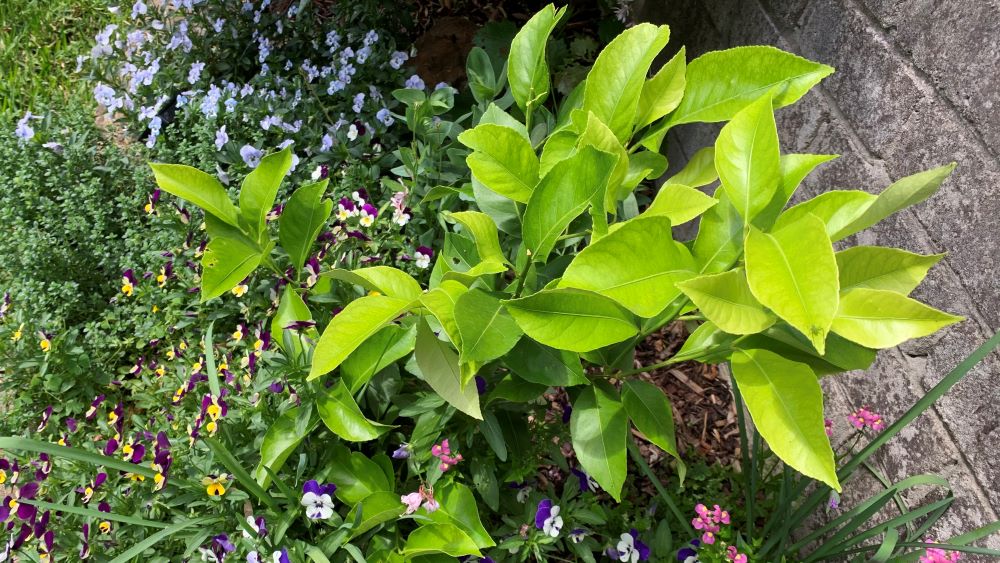
3. Browning leaves
Browning leaves can be a sign that the plant is overwatered. The leaves will turn from yellow to brown over time. Brown leaves are also a sign of underwatering which can be confusing but the difference is usually that the soil will be wet.
4. Wet soil
Wet soil is a good sign that your lemon tree is getting too much water, especially if it stays wet for a number of days. If you see water pooling after rain the soil itself might have poor drainage. If the soil does not have enough organic matter it can hold the water for a lot longer than it should for a healthy lemon tree.
This happens commonly in soils with a lot of clay that have not been improved with compost or animal manures.
5. Mold growing on the surface of the soil
Mold on the soil or mulch surface can be a sign that your lemon tree is overwatered. Very wet soil can actually grow mold or fungus including mushrooms or toadstools. If you notice a green or yellow slime mold, lots of toadstools or green mold pieces on your mulch this can mean there is too much water in the soil.
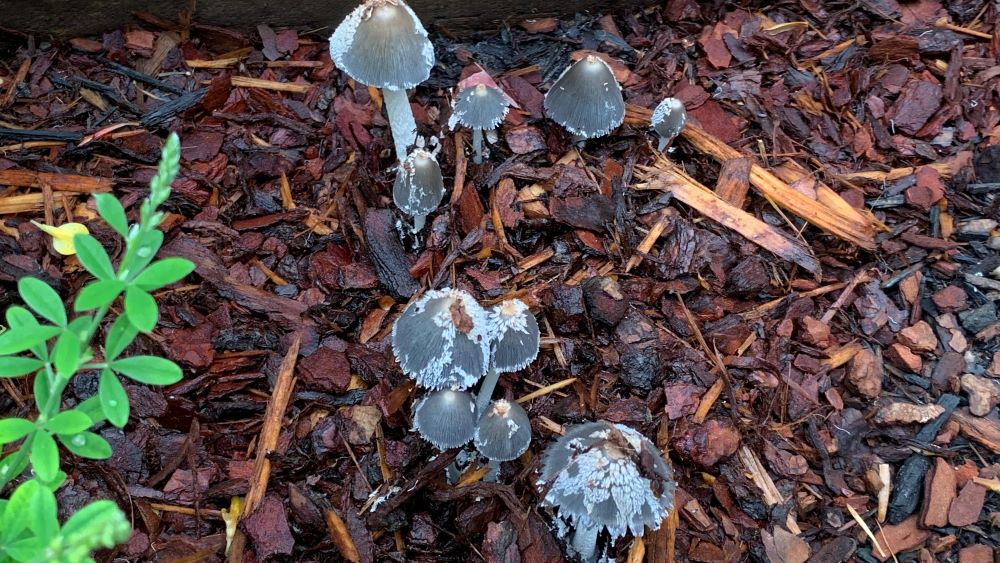
6. Smelly mulch
Another sign that a lemon tree is getting too much water is that the bark, leaf or straw mulch will start to rot and can smell. Blackening and smelly mulch can grow mold or even go rancid if there is too much water on the soil.
This will be a sign that the tree will be getting too much water too and is usually paired with yellowing leaves on the lemon tree which will eventually turn brown.
How to stop overwatering a lemon tree
Lemon trees can be overwatered easily by an irrigation system that has been turned up too high, too much water from your hose or heavy rainfall. Here are my tips to avoid overwatering your lemon tree
Mulch
Mulch is key to regulating the amount of water being delivered to your lemon tree. Add a 2-3 inch layer of bark mulch to help to absorb extra rain. The mulch will slowly release it back into the soil over time.
Rather than soaking the soil or washing it away, bark mulch will protect the lemon tree roots and prevent it from getting too much water.
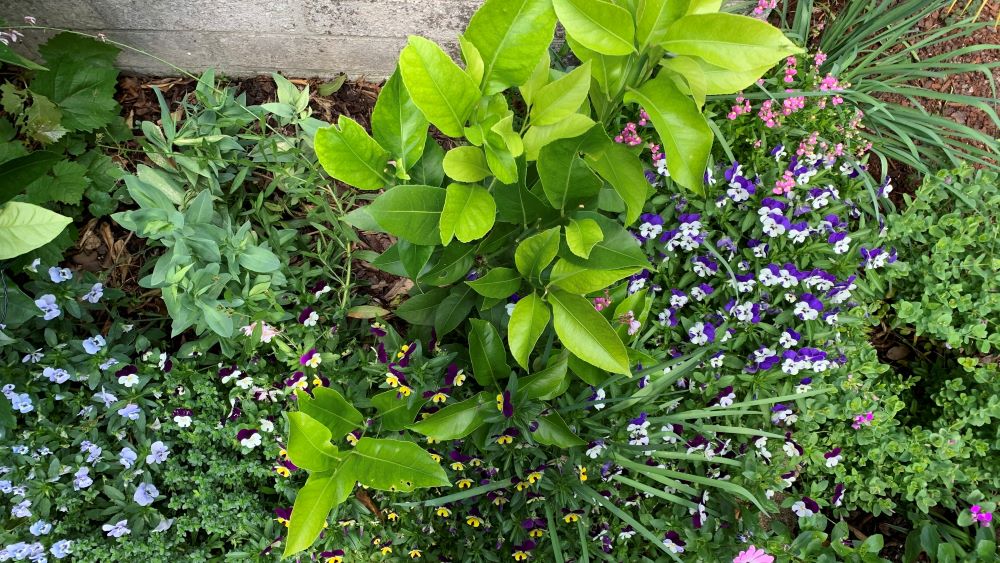
Test the soil
Before you add more water to the lemon tree test it with your finger or a small spade first. On the outside of the root area, move the mulch away and have a look at the soil moisture 1 inch down. If it is dry you can deep water the lemon tree.
After a few months you will start to get an understanding of how much water your lemon tree needs. If you get a good shower of rain your lemon tree might be fine on rain alone and only topped up during the summer.
Water each week and adjust your irrigation
Summer watering will need to be regular as often as every week. Deep water the plant and make sure it has a good cover of mulch. If you have irrigation set up, turn the irrigation down so that it is only activated if the tree really needs it.
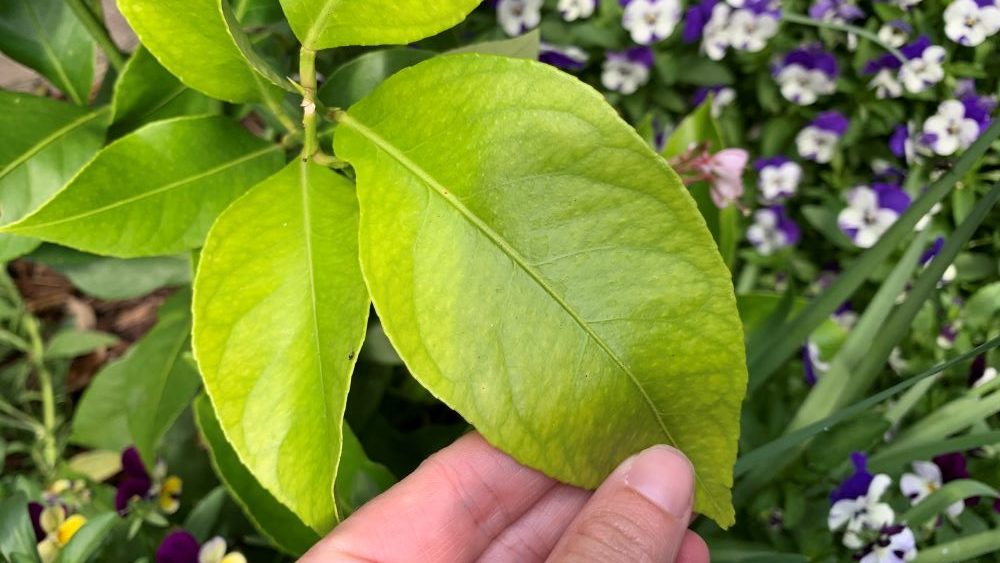
How to fix an overwatered lemon tree
After you have added a good layer of mulch and fixed your watering schedule there are a few more steps you can take to help your lemon tree to recover from overwatering.
Trim off any damaged leaves
If there are leaves that have been damaged by overwatering by turning brown or yellow, trim them off with sharp secateurs. Trim the stem off below the damaged leaves and the lemon tree will grow back in spring and summer.
Most of the time it is better to remove the leaves although they can be left on if you are expecting very hot days. These leaves can protect the healthy leaves from the harsh sun and then be removed once the weather has cooled down.
Add some slow release fertilizer
After the tree has been mulched and old leaves removed you can add a handful or two of pelleted chicken manure. This will add back a range of nutrients including nitrogen to help to replace the green pigment in the leaves.
You can also use a citrus specific slow release fertilizer, fish emulsion or general slow release fertilizer.
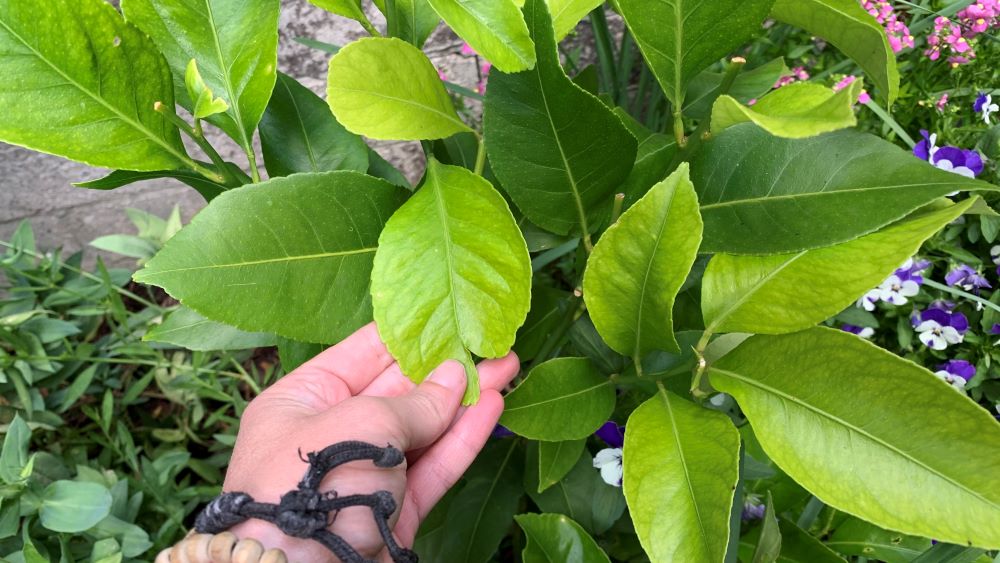
Overwatering a lemon tree | Summary
Lemon trees can be overwatered during a very wet winter or spring, if the irrigation system is turned on too regularly or if you get carried away with hose watering. Use mulch to absorb extra water, slow down your watering schedule and add back lost nutrients by using a slow release, balanced fertilizer.
Happy growing.
Lemon Trees
- Lemon Tree Companion Plants | 15 Flowers, Fruit and Herbs
- What age do lemon trees start fruiting? | 3 Years: Plus tips for Fruit Sooner
- How to Fertilize a Lemon Tree | 6 Easy Steps
- How to safely leave your lemon tree outside in winter | Top 11 Tips
- Lemon tree winter care | 6 Tips and Tricks
- Overwatering a lemon tree | 6 Ways to know + Solutions
- Lemon tree has flowers but no fruit | 6 Easy Solutions
- No flowers on lemon trees: 11 Simple solutions
- Why lemon trees attract bees | + Ants, Aphids & Ladybugs
- How to use Epsom Salts on Lemon Trees | 5 Easy Steps
- Growing Lemon Trees in Full Sun | 6 Hours of Sun
- Do lemon trees have invasive roots? | How to keep roots contained
- Coffee Grounds for Lemon Trees | Easy Guide
I am an accredited practicing dietitian, experienced gardener and a dedicated cook. I love writing and sharing my experience so you can learn from my successes and mistakes.
